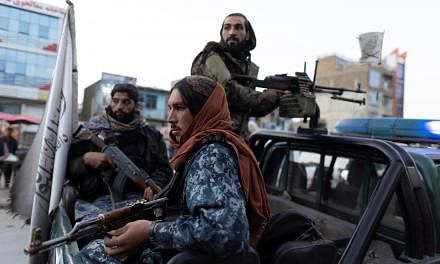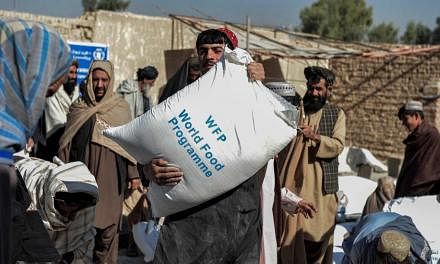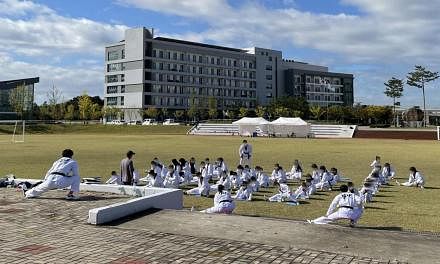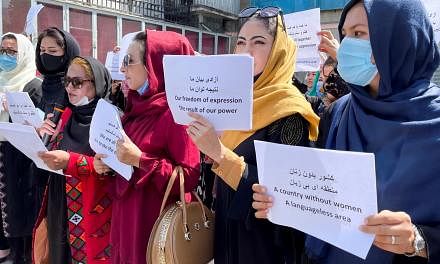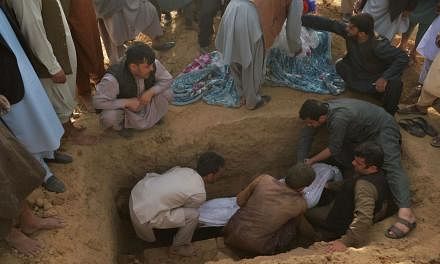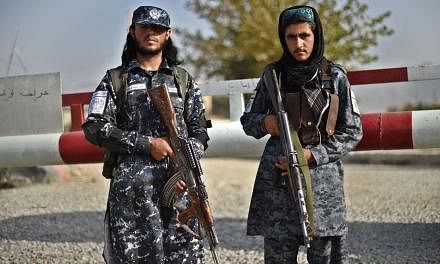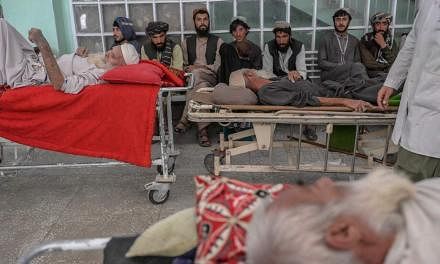AL UDEID AIR BASE, QATAR (NYTIMES) - Walking down the tarmac of the US military air base about 2am recently, the Afghan woman lunged for a handgun strapped to an American airman's leg. As service members rushed to restrain her, she shrieked and thrashed - determined to kill herself. Then, she crumpled into a ball and sobbed.
Her family had been killed during the Taleban's rapid takeover in Afghanistan and she had barely managed to get on an evacuation flight out of Kabul. Now, she was hundreds of miles from her homeland - all alone.
"Please, please, please," she gasped, the orange and yellow lights from buses crowded with evacuees flashing across her tear-soaked face.
Since the Taleban seized power in Afghanistan, the exodus of Afghans has swelled like a flash flood, inundating US military bases in places like Qatar, where tens of thousands of evacuees have over the past two weeks arrived to be screened by US authorities.
But as international evacuations wind down, attention has turned to the fates of those who were part of the sudden and unanticipated mass exodus. In just two weeks, more than 5,000 American troops in Kabul helped evacuate more than 114,000 people in a chaotic and often violent effort reflective of the stunning pace at which the Taleban took over.
After the insurgents entered the Afghan capital, Kabul, desperate scrums of people descended on the city's international airport, where they clambered onto evacuation flights.
On landing in Qatar, which has played a key role in evacuation efforts, some Afghans fell to their knees in tears after disembarking, thinking they had arrived in the United States.
But that hope was extinguished after they were shuttled to a refugee processing centre run by the US military in a large aircraft hangar - their first glimpse into the long, gruelling journey toward eventually being resettled in the United States.
The surge of evacuees has already promised to create numerous legal, bureaucratic and logistical problems. Many Afghans who clambered onto flights may not be eligible for resettlement in the United States.
Those who are risk overwhelming resettlement organisations in the United States that are tasked with providing for the immediate needs of newly arrived refugees - like housing, medical care and food - and that typically handle only a steady trickle of newcomers.
And at the processing centres, the relief of escaping Afghanistan under Taleban rule has collided with the hardships of leaving a homeland and starting life anew. Amid the exodus, people's collective sense of mourning for what Afghanistan once was has given way to fear for what their lives will become outside of it.
"Thinking about my family, their situation, I am not mentally well," said Ms Zahra, 28, who left last week on an evacuation flight to Doha, the capital of Qatar. "And then in America, we don't know what will happen there: Will we find a job, will we settle in a good place, will we make better lives for ourselves?"
Like others interviewed for this article, she asked that only her first name be used to avoid reprisals.
Since she arrived in Doha, Ms Zahra has been replaying the warning a Taleban guard gave her: Once she left, she would never be allowed back.
In Afghanistan she had readied herself to flee for nearly a week as she watched provincial capitals collapse in rapid succession. Then, two days after the insurgents poured into Kabul, she rushed to the airport with her mother, her siblings and their families.

After they pleaded with Taleban guards at the gate for more than an hour, the insurgents moved aside to allow Ms Zahra's family through. But as the crowd behind her surged forward, she heard the Taleban firing weapons into the air and felt her mother's hand slip out of her own. When she turned around, she saw Taleban guards beating back the group behind her, with her mother and the rest of her family swallowed into that crowd.
Only Ms Zahra, her brother-in-law and his children made it past the gate. Last week, they joined thousands of other Afghans who have poured into the processing centre at Al Udeid Air Base.
Inside the aircraft hangar, bone-tired children sprawled across a patchwork of green Army cots, some stained from babies in need of diapers. With only part of the hangar air-conditioned, the air often felt thick from the 115-degree (46 deg C) heat outside.
Plastic bottles and human waste littered bathroom stalls. In giant tents with fluorescent lights overhead, mattresses covered the floor and hundreds of people tried to settle in. Outside the tents, a makeshift playground had been set up for the children.
Overstretched American military personnel have worked around the clock to provide medical care, food and water to the unexpected flood of arrivals while immigration officers vet them.

But the initial influx of Afghans outpaced the ability to screen them, raising concerns that a humanitarian disaster was unfolding in the processing centres.
Mr John Kirby, the chief Pentagon spokesman, said Tuesday (Aug 24), "We'll be the first to admit that there were conditions at Al Udeid that could have been better," adding that poor circumstances were "facilitated by the sheer numbers, and the speed with which those numbers got there."
To ease the strain on the transit hub in Doha, the US military began sending evacuees to US bases in Germany, Italy, Spain and Bahrain, Mr Kirby said. In Doha, more than 100 additional toilets, plus cleaning and catering services, have been added to improve conditions.
After spending hours - or in some cases, days - at Al Udeid, many Afghan evacuees have been transferred to Camp As Sayliyah, a former Army base in a suburb outside Doha, which includes shipping containers transformed into transitional housing.
The camp was intended for the months-long process of screening Afghans who worked with the US government and had applied for special immigration visas - a group that, a few months ago, was not expected to number more than a few thousand.
Instead, in the first few frenzied days under the Taleban, when rumours swirled of US planes transporting Afghans directly to the United States, thousands of people without passports, visas or identification cards flooded Kabul's airport and were placed on Doha-bound planes.
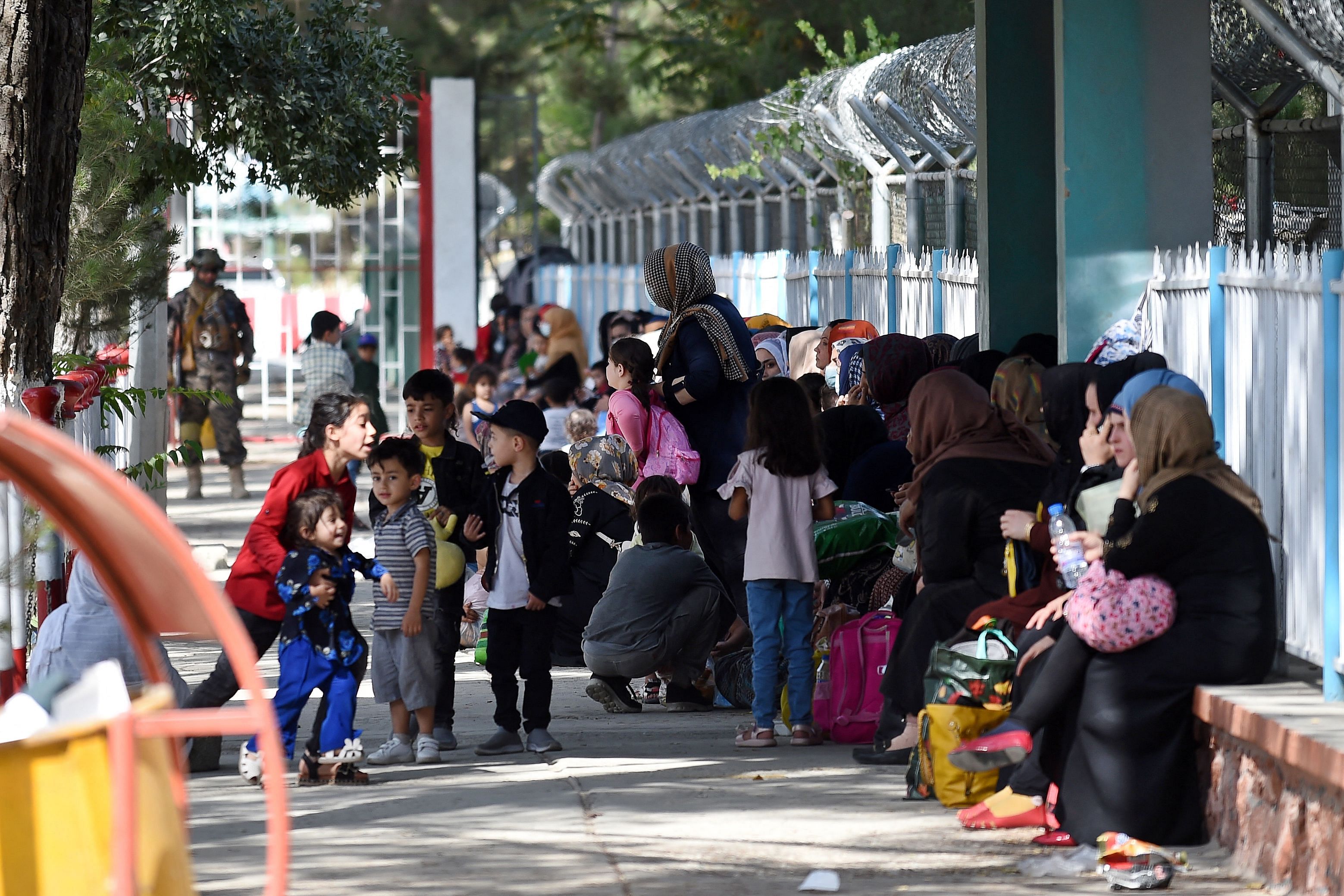
Mr Mirwais, 31, arrived at the air base in Qatar after clambering onto an American evacuation flight last week. A former translator for US forces and international organisations, he went into hiding when the Taleban entered Kabul and decided to leave after insurgents searching for him visited his mother's home.
"If I were in Afghanistan, I would be dead right now," he said. But with each passing day in the camp, he added, hope fades that he will not just survive but start a better life.
After days of desperate calls to relatives to try to get his wife and 10-month-old child evacuated, Mr Mirwais said he had all but given up on reuniting with them outside Afghanistan. And his ability to travel on to the United States is anything but certain.
"I have no passport with me, no papers," he said. "But if I can't go on to the United States, what will happen to me? How will I support my family?"

